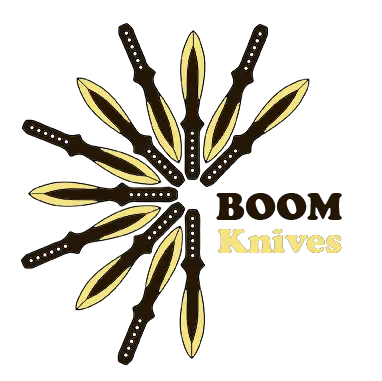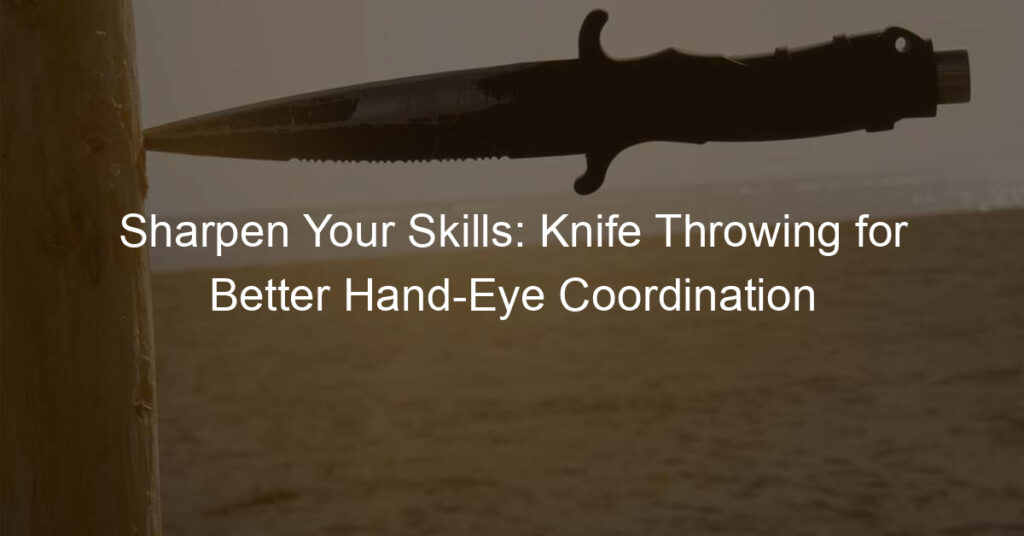Ready to take your knife-throwing game to the next level? Whether you’re a competition enthusiast or simply enjoy performing for an audience, mastering the art of knife throwing takes skill, practice, and technique.
What are the basic knife-throwing techniques?
Knife throwing can be a fun hobby or even an art form. Though it may look complicated, there are only a few basic techniques to learn to become proficient as a knife thrower.
The first is called the spin throw technique and involves spinning multiple times and releasing the knife when the right momentum has been reached. This is usually followed by the one-spin throw, sometimes referred to as “cowboy style,” which involves the person holding onto one end of the knife while they spin with it once before releasing.
Finally, you have the pinch grip, which requires using your thumb and forefinger to hold onto the middle of a balancing knife as you slowly move your arm back for more power before aiming. All these techniques rely heavily on practice and skill, but with some hard work, anyone can soon become a master of the art of knife throwing.
How do you improve your knife-throwing technique?
Throwing a knife can be tricky and it takes time, patience, and practice to improve your technique. To get started, make sure you have a knife that is designed for throwing – the size, weight, and balance of the knife matter.
Next, find a suitable place to practice and keep safety at the top of your list – having an area with a backstop is ideal. Once you’re ready to throw, focus on throwing with consistency; work on repeating your setup and arm motion until you develop muscle memory so you will feel comfortable when it’s time to throw during competitions.
Throwing a few times each day will help ingrain consistent technique while building up accuracy. Above all, have fun while improving your technique!
What are some tips for knife-throwing accuracy?
Throwing a knife with accuracy may seem intimidating, but it can be learned with practice. To begin honing your knife-throwing skills, start by finding suitable targets such as thick wooden boards or hay bales to reduce the risk of ricochets.
Practice drawing the knife from your belt or pocket and become comfortable with the weight and feel of it in your hand. Once you have the basics down, work on techniques such as spinning and arc throwing to achieve greater accuracy.
Be sure to also emphasize safety and use protective gear like gloves or face masks when necessary. With lots of dedication and a little patience, you’ll soon be hitting bulls-eyes with ease!
How do you throw a knife without spinning?
Throwing a knife without spinning is one of the most exciting skills to master for knife enthusiasts. It takes time and practice, but eventually throwing knives accurately. To start, make sure you are using a properly weighted and balanced knife that can be thrown safely.
Hold the handle between your thumb and forefinger with as little rotation as possible, then bring it back over your shoulder before releasing it towards the target. Ensure that the end of your arm is pointing in the same direction you want the knife to go.
Finally, add no spinning motion; keep everything nice and straight and remain focused until the knife reaches its target. With enough practice and patience, you can master this skill like a pro in no time!
What are the different types of knife-throwing grips?
When it comes to knife throwing, every expert knows that proper grip is key. If you don’t have the right grip on your blade, there’s no way you’ll be able to stay consistent and accurate with your throw.
As such, it’s important to understand the different types of grips available before becoming a knife-throwing pro. Generally speaking, the three main grips are palm grip, hammer grip, and overhand grip. Each has its unique benefits based on your size, strength, and preferences.
For example, if you have a large hand or are especially strong in coordination and concentration, then the hammer grip is best for you. But if you prefer more control during a throw then opt instead for the overhand grip which offers greater accuracy as well as more spin on the blade itself for increased confidence in your throw.
All in all, every experienced knife thrower will tell you that experiment with each type of grip until you find what works best for you – practice makes perfect after all!
What is the best distance to throw a knife?
Throwing a knife may seem intimidating, but with the right supplies and a lot of practice, it can get quite addicting! While accuracy does improve with practice, there are also certain distances depending on the type of knife you have, as well as the size.
For a standard throwing knife that’s around 8-9 inches long, a good place to start is between 10-16 feet away from your target. This provides enough distance to establish momentum so that when you throw it rotates in mid-air.
Of course, this will vary depending on what kind of knife it is and your technique. To find the best distance for yourself, take some time to experiment safely with various throwing knives and distance combinations until you find what works for you!
What are some common mistakes in knife throwing?
Knife throwing is an interesting and fun activity, but it does require skill and accuracy. Unfortunately, even experienced knife throwers can still make mistakes – some of the most common ones being not giving enough attention to one’s stance, gripping the knife too tightly or in a manner that restricts your release, and releasing the knife at too low or high an angle.
If you’ve been throwing knives for a while and feel like you’re not making any progress, take a close look at these common errors as they could be contributing to poor performance. With awareness and practice, you should soon be able to perfect your technique.
How do you calculate knife-throwing distance?
Calculating the distance for knife throwing requires precision and skill to ensure safety. First, you should measure the recommended distance from a solid target such as a tree or wall.
Then, use the measurement of your throwing arm to measure in increments from that starting point. Mark each increment with either chalk or string so you can keep track and practice accuracy in your aim. Don’t forget to factor in how your knife design will affect how far it flies.
Finally, always pay attention to safety measures when aiming and never throw at a person or unprotected areas like stone or concrete walls. With these steps, you will be able to calculate your knife-throwing distance safely and efficiently!
What are the safety measures for knife throwing?
Knife throwing can be an exciting and entertaining activity, but it’s important to practice safety precautions to ensure that you, the knife-thrower, don’t get injured. Always make sure to throw knives in an outdoor area away from people or objects that can be damaged.
Additionally, when handling knives at any given time, wearing durable cloth and leather gloves is a best practice to reduce the risk of hand cuts. Making sure the target you’ll be throwing at is firmly secured on sturdier stands will also keep you and those participating safely.
Checking the condition of every knife is also essential to avoid blades breaking in midair or on impact–which could have potentially dangerous consequences. Ultimately, while knife throwing can be a great outing with your friends or family, all involved parties must ensure utmost caution and attention for a successful experience.
Conclusion
To wrap up, knife throwing may seem intimidating at first, but with practice and proper technique, anyone can become a master of this ancient art. For competition purposes or performance purposes, knife throwers should establish a safe environment to perform in and use caution when practicing. It’s also important for knife throwers to keep an eye on their equipment and inspect them for any changes over time. Additionally, with attention to detail and practice comes confidence in the strength of technique; ultimately giving knife throwers the ability to see acceleration or improvement when competing or performing. In the end, it’s all about mastering your craft – which is something we can all strive to do every day.







